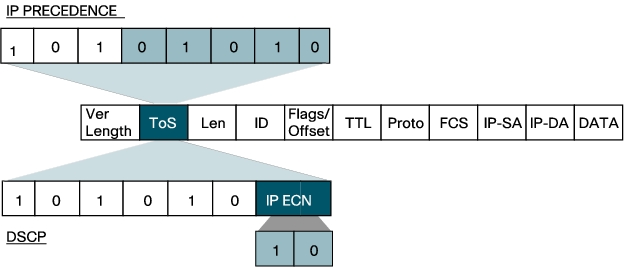QoS Markings: Layer 2 and 3 and IPv6
April 19th, 2010
When data is sent through a network, it is able to be tagged with a “priority value”. When the data passes through a network device, the network device uses that priority value to determine how it should treat the packet. Data can be tagged with a priority value as described in the following article.
Class of Service:
When a packet is transmitted out an Ethernet port, it has an Ethernet header attached to it. This Ethernet header can include an optional VLAN tag (also referred to as an IEEE 802.1Q VLAN tag).
- Within the VLAN tag is a 3-bit field called the class-of-service (CoS) field. These 3 bits can be manipulated to yield eight different priority values. Figure 1 shows where in the Ethernet header the priority bits are found.
Type of Service:
Built into every IP packet is an IP header, and like in the Ethernet example earlier, the IP header also contains a field that defines a priority value for this packet. This field is the type-of-service (ToS) field, an 8-bit field. There are two ways to set a priority value in the ToS field.
- One method, called IP precedence, uses the 3 most significant bits of the ToS field to yield eight priority values.
- Differentiated services code point (DSCP) is a second method for assigning a priority to an IP packet. DSCP uses the 6 most significant bits of the ToS field to yield 64 different priority values.
The Location of ToS bits in the IP header:
IPv6 Traffic Class:
The IPv6 header also contains a QoS marking field termed traffic class. This field can be manipulated to mark or retain QoS markings of an IPv6 packet.



